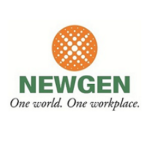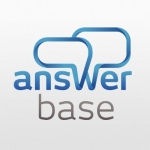The most valuable feature of Content Manager is its flexibility in handling a lot of documents and document images; being an IBM product, I like that. It's not designed to just use DB2, which is another IBM product. It's flexible enough that you have the choice to choose a different back end. We use Oracle, which is a different database back end.
It's not that easy to figure out for a newbie, but I managed to learn it in the past few months.
It's made the management of document images much easier. We're using a product like Content Manager instead of managing ourselves millions of files, whatever that entails; moving them around, figuring out file names, allocating storage, assigning indexes so that we can search for documents easily in terms of document types, whatever is contained in a document or whatever we can think of to tag documents. For example, this is a form, this is a loan document, this is a proof of income document. Using Content Manager, we're able to classify documents with attributes like that.
I would like there to be more documentation. A lot of the knowledge that we have gained has been from calling IBM support people, or Googling things on the web and then learning from experiences of other users. I would like there to be more formal IBM documentation. If you do a Google search for anything, you don't know how official the results are or if those things are even supported. If you do things this way, you might be doing things that are not recommended by IBM and you void some kind of contract with them or something. I would feel better if the searchable knowledge base is actually IBM's. I would like them to provide that.
As far as the product itself, I don't have many major complaints. So far, we've had to develop a custom program that we have for searching and viewing; basically, an interface in front of the users. I've heard a lot about Content Navigator, which is their own interface and would probably replace of our custom one. I was going to mention that I wanted something out of the box that we could immediately use for searching, viewing and indexing documents, but I guess they have it. It's just that I haven't had any experience working with it. They promise that Content Navigator is something that you can use out of the box without coding, quickly slap together and the users can just run with it.
However, I've heard from other users, other IBM customers, that's not necessarily the case. Nothing out of the box can really be used immediately. You still have to do some kind of customization. I'm thinking that's almost like what we have done already. Why move to Content Navigator and throw away our development to do other development? I am holding my verdict until I have hands-on experience with Content Navigator, because what I’ve heard is only hearsay. I don't know myself if it's really that difficult or that useless.
I think it's fairly stable in the sense that we have been running it for more than five years. Once a year, if at all, we would get some kind of failure. Once you get it up and running, it's pretty stable. The complexity lies in the setup and the administration.
Right now, the only area of scalability I'm exposed to is the storage of the images themselves. The setup we have has been around for 10 years or so. The number of documents has grown more in the last two years than in the eight years prior to that. We've had to add more storage to house all those files. I thought that it would be a humongous project, a big endeavor to do that, but Content Manager made it easier for us. All we had to do was allocate another drive and tell Content Manager about it. That's it. It took over from there.
It's very scalable.
The initial setup and implementation is complex. I don't know if we're unique in terms of IBM's customers having this kind of setup. We have a bunch of servers that are working together. Some are Windows and some are Linux. Each of the three major components of Content Manager – the library server, resource manager, and the custom Java API – are on a different server, whereas some customers might have all of them on one server. I don't know how unique we are in that sense, but I think the complexity was a result of that, in terms of trying to make them work together.
For a new setup, I would advise employing IBM's help at the earliest possible stage. Don't try to figure everything out by yourself. Of course, a lot of research beforehand would be beneficial, before even starting to put hands on the keyboard. I think a lot of planning is required. As I’ve mentioned, employ IBM's help early on, don’t include them only after you're having trouble already.
As a group, we are thinking of employing IBM in more of a hybrid approach. As far as I know, we have not finalized any strategy yet in terms of usage of cloud. We are fairly new to that space, so I think that's where that's coming from. I don't see any technical hindrances from our side as far as going to a full-blown cloud solution, but the nature of it is, we're a big organization. Things happen more slowly, or more slowly than other, more agile organizations just because of the nature of our size. That's why I think it's more of a hybrid. We want to go to a cloud solution because that's where, I think, things are going, but doing a hybrid approach allows us to get our feet wet first, then go to the final product.
I’m not aware of any new analytics applications that we're now able to provide for our organization as a result of using this solution, right now.
There aren’t any existing services that we're able to provide better than we were before. We have been using IBM's Content Management suite of products for a while now. I don't know if we have anything better, aside from moving to newer versions every time they come in. We're reaping benefits from that, but I'm not sure if anything major has improved in the last few years. I'm not aware of that.
We definitely have plans to include mobile. We are seeing a lot more business users requesting that kind of capability, where they can search for documents, they can view images using their mobile device; maybe even capturing documents, scanning them from a mobile platform. I hear a lot of demand for that kind of thing.
In the last few months, even within the last year, I have seen that more users are going to our Content Manager custom application for things like researching legal requirements or figuring out what is involved in some kind of audit request for documents. Before, they would rely on more traditional approaches, such as going to an engineer who is responsible for databases. That engineer would search in the database and would figure out where the corresponding documents are. Within the last few years, we have enabled those users – whether in the legal department or somewhere else not related to loan origination, which is our primary user base for my small team – to use our custom application. Instead of those lawyers or legal personnel requesting things from us, we can say to them, "Why don't you just go to the source?" They can do whatever search they need to do.
Usability is okay. As I’ve mentioned, once you set it up, once you have it up and running, it's fairly easy to figure out, to maintain, to keep running. I don't have any complaints around that.
When selecting a vendor to work with, we want someone who has the resources to stick around and be available for any kind of support, such as for production issues or for major upgrades that we are doing; to help us out in setting up; and also someone who's committed to helping customers, not just sell to customers, and help them use their products to their maximum abilities, to take advantage of all its features and so on. I think IBM is doing a good job with that.
My rating comes from a place where I have grown more familiar with it. I've grown more comfortable with how it works. I appreciate the complexity of what it's trying to do. Granted, it's my first experience with anything related to content management, so I'm a little biased because I haven't seen anything else.











